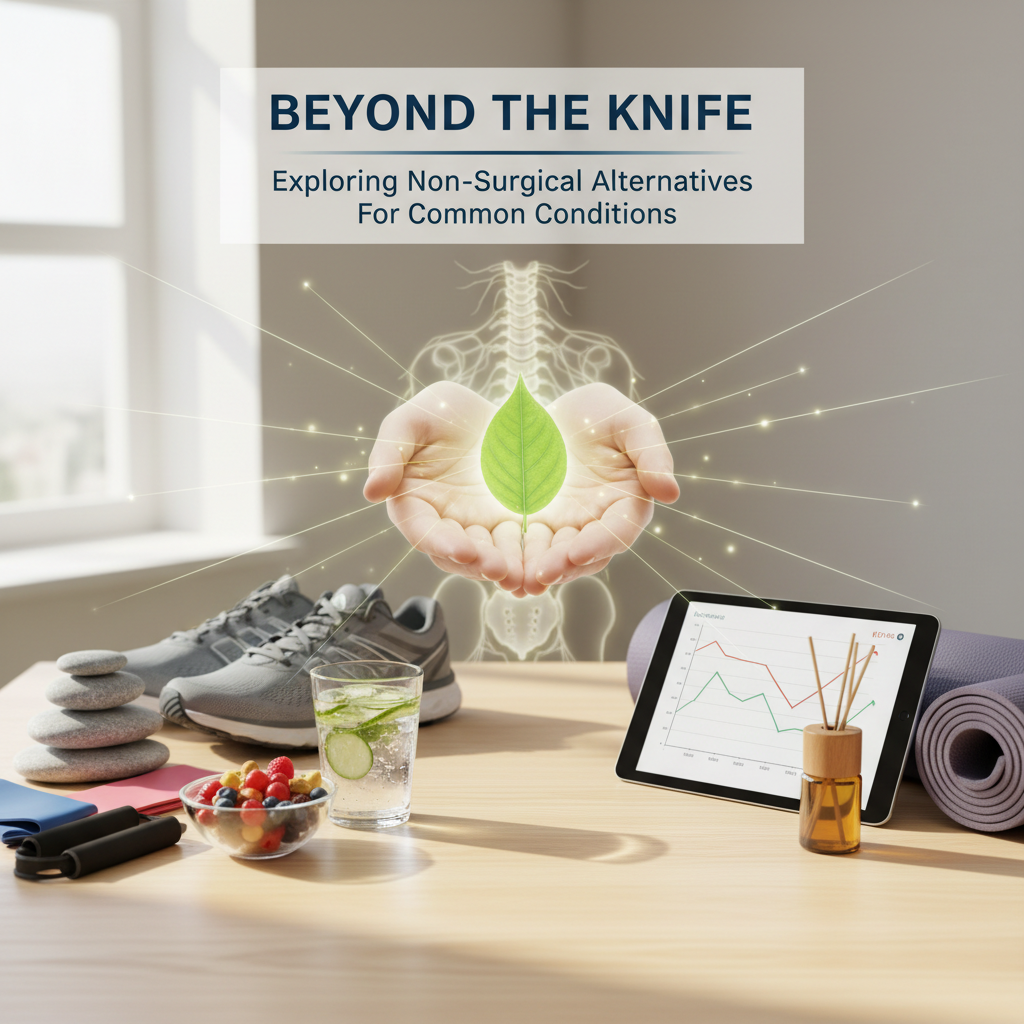Top 5 minimally invasive surgeries changing healthcare
Remember the days when surgery meant large incisions, lengthy hospital stays, and painful, extended recovery periods? Thankfully, those days are increasingly becoming a thing of the past, thanks to incredible advancements in medical technology. We're now living in an era where minimally invasive surgeries are not just an option, but often the preferred choice for a wide range of conditions. These procedures are revolutionizing healthcare, offering patients less pain, faster recovery, and better outcomes.
But what exactly are minimally invasive surgeries, and how are they transforming the medical landscape? In short, they involve making smaller incisions, often using specialized instruments and advanced imaging techniques, to perform operations that once required much larger cuts. The benefits are clear: reduced blood loss, lower risk of infection, less scarring, and a quicker return to daily life.
Let's dive into the top 5 minimally invasive surgeries that are truly changing healthcare as we know it.
Top 5 Minimally Invasive Surgeries Changing Healthcare
1. Laparoscopic Surgery (Keyhole Surgery)
Leading the charge in minimally invasive techniques is laparoscopic surgery, often playfully referred to as "keyhole surgery." This technique involves making a few small incisions (usually 0.5 to 1.5 cm) through which a laparoscope (a thin, lighted tube with a camera) and specialized surgical instruments are inserted. The surgeon views the internal organs on a monitor and performs the operation.
- How it's changing healthcare: Laparoscopic surgery has become the gold standard for many abdominal and pelvic procedures, including gall bladder removal (cholecystectomy), appendectomies, hernia repairs, and various gynecological surgeries (like hysterectomies and ovarian cyst removal). Patients experience significantly less pain, shorter hospital stays (often just overnight), and can typically resume normal activities much faster than with traditional open surgery.
- Impact: It has vastly improved patient experience and reduced healthcare costs associated with longer hospitalizations and extensive post-operative care.
2. Endoscopic Procedures
While often grouped with laparoscopic, endoscopic procedures deserve their own recognition due to their vast scope and impact. Endoscopy involves inserting a long, flexible tube with a camera (an endoscope) into the body through natural openings (like the mouth or rectum) or small incisions. This allows doctors to visualize internal organs, take biopsies, and even perform minor surgical interventions without any external cuts.
- How it's changing healthcare: Endoscopes are used for colonoscopies, gastroscopies, bronchoscopies, and cystoscopies, revolutionizing diagnosis and treatment of digestive, respiratory, and urinary tract issues. Beyond visualization, endoscopes can be fitted with tiny tools to remove polyps, stop bleeding, or dilate narrow passages. This means many procedures that once required surgery can now be done on an outpatient basis.
- Impact: Early detection of cancers, precise diagnosis of inflammatory conditions, and non-surgical treatment of several ailments have significantly improved patient outcomes and quality of life.
3. Robotic-Assisted Surgery
Taking minimally invasive surgery to the next level is robotic-assisted surgery, most notably with systems like the da Vinci Surgical System. Here, a surgeon sits at a console, visualizing the surgical site in 3D, high-definition, and manipulates robotic arms that hold surgical instruments. These arms mimic the surgeon's hand movements, but with enhanced dexterity, precision, and an extended range of motion, far beyond what the human wrist can achieve.
- How it's changing healthcare: Robotic-assisted surgery is widely used in complex procedures such as prostatectomies (for prostate cancer), hysterectomies, cardiac valve repairs, and some colorectal procedures. The enhanced precision allows for more intricate dissections, less blood loss, and preservation of surrounding healthy tissue, leading to superior functional outcomes for patients.
- Impact: For complex surgeries, it offers unparalleled control and visualization, often translating to better cancer removal (oncological outcomes) and quicker recovery even for challenging cases.
4. Thoracoscopic Surgery (VATS - Video-Assisted Thoracoscopic Surgery)
Moving into the chest cavity, VATS is the minimally invasive equivalent of open chest surgery (thoracotomy). Instead of making a large incision to open the rib cage, VATS uses several small incisions to insert a tiny camera and specialized instruments into the chest. Surgeons then perform procedures on the lungs, pleura, esophagus, and other thoracic organs.
- How it's changing healthcare: VATS is used for lung biopsies, removal of lung nodules or parts of the lung (lobectomy for lung cancer), treatment of collapsed lungs (pneumothorax), and esophageal procedures. The shift from open thoracotomy significantly reduces post-operative pain, shortens hospital stays, and decreases recovery time from months to weeks.
- Impact: Patients with lung and chest conditions benefit from less trauma, preserving lung function, and a faster return to normal breathing and activity.
5. Minimally Invasive Orthopedic Surgeries (e.g., Arthroscopy)
Joints, a common site for pain and injury, have also seen a revolution with minimally invasive techniques. Arthroscopy is a prime example, where a surgeon inserts a small camera (arthroscope) and tiny instruments through small incisions into a joint (like the knee, shoulder, hip, or ankle). This allows for diagnosis and repair of various joint issues.
- How it's changing healthcare: Arthroscopy is routinely used to repair torn cartilage (meniscus in the knee), reconstruct ligaments (ACL repair), remove loose bodies, and treat inflamed joint linings. Beyond arthroscopy, other minimally invasive orthopedic techniques are emerging for spine surgery (minimally invasive spinal fusion) and even joint replacements, aiming to reduce muscle damage and bone cutting.
- Impact: Athletes and active individuals can get back on their feet and return to sport much faster. For chronic joint pain sufferers, these procedures offer relief with less downtime, improving mobility and quality of life significantly.
These five categories represent just a snapshot of how minimally invasive surgeries are profoundly impacting modern healthcare. They are pushing the boundaries of what's possible, continually moving towards a future where surgical intervention is less traumatic, more precise, and leads to quicker, healthier recoveries for patients worldwide.
Related Questions
Q1: What are the main advantages of minimally invasive surgery over traditional open surgery?
The main advantages include smaller incisions, less pain and scarring, reduced blood loss, lower risk of infection, shorter hospital stays, and faster recovery times, allowing patients to return to their normal activities sooner.
Q2: Are minimally invasive surgeries suitable for all patients and conditions?
No, while highly beneficial, minimally invasive surgeries are not suitable for every patient or every condition. Factors like the patient's overall health, the complexity of the condition, previous surgeries, and the surgeon's expertise play a role. A surgeon will always assess if a minimally invasive approach is the safest and most effective option.
Q3: What training do surgeons undertake for minimally invasive procedures?
Surgeons undergo extensive specialized training in minimally invasive techniques, often involving simulation, dedicated fellowships, and hands-on experience under the guidance of experienced mentors. This specific training ensures they have the necessary skills to operate with precision using specialized instruments and viewing systems.
Q4: What is the future of minimally invasive surgery?
The future of minimally invasive surgery is exciting, with trends pointing towards even smaller incisions (or no incisions at all, like natural orifice transluminal endoscopic surgery - NOTES), further advancements in robotics and artificial intelligence, enhanced imaging (such as augmented reality during surgery), and personalized medicine approaches that tailor procedures to individual patient needs and anatomy.




